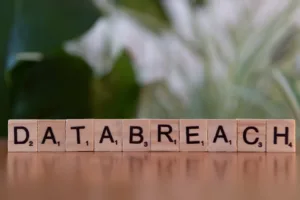
The emergence of VanHelsing ransomware in March 2025 has raised significant concerns due to its ransomware-as-a-service (RaaS) model and multi-platform targeting capabilities. With confirmed victims in government, manufacturing, and pharmaceutical sectors across France and the U.S., this threat demands immediate attention from security professionals. This article provides a detailed breakdown of VanHelsing’s operation model, technical characteristics, and actionable defense strategies.
Executive Summary for Security Leaders
VanHelsing operates as a RaaS platform with an 80/20 revenue split favoring affiliates, requiring a $5,000 deposit from newcomers. It employs ChaCha20 encryption with Curve25519 key exchange and demonstrates multi-platform capabilities (Windows/Linux/ESXi), though only Windows attacks have been confirmed. The ransomware implements double extortion tactics through a dark web leak portal and shows rapid development cycles with two variants observed within five days.
- First Observed: March 7, 2025
- Confirmed Victims: 3 (Government, Manufacturing, Pharmaceutical)
- Ransom Demands: Up to $500,000 in Bitcoin
- Critical Vulnerabilities Targeted: Fortinet, VMware ESXi, Linux systems
Technical Operation Analysis
VanHelsing distinguishes itself through several operational features. The ransomware uses partial encryption for files larger than 1GB while applying full encryption to smaller files, a technique designed to balance speed and impact. Security researchers at Check Point have identified that the malware appends the .vanhelsing extension to encrypted files and maintains a user-friendly affiliate control panel with dark mode support1.
Command-line customization allows attackers to target specific drives or folders, with optional SMB spreading capabilities. The malware’s stealth mode decouples encryption from file renaming operations, a technique observed in recent RaaS offerings to evade behavioral detection systems. Analysis of the two compiled variants reveals inconsistent file extension handling, suggesting rushed development despite the rapid update cycle2.
Affiliate Model and Targeting
The RaaS operation follows emerging trends in the cybercrime ecosystem by offering favorable terms to affiliates. Established hacking groups gain free access to the platform, while newcomers must pay a $5,000 deposit. This model mirrors the approach taken by LockBit 4.0, which recently re-emerged after FBI disruption attempts. VanHelsing operators enforce geopolitical restrictions, explicitly prohibiting attacks against Commonwealth of Independent States (CIS) countries3.
Victimology data shows concentration in Western markets, with all confirmed attacks occurring in France and the United States. The ransomware’s dark web portal follows the double extortion playbook, threatening to publish stolen data unless payment is received. Security teams should note that initial access typically occurs through phishing campaigns, with subsequent deployment via compromised credentials or unpatched vulnerabilities4.
Defensive Recommendations
Effective mitigation requires a layered approach focusing on both prevention and resilience. Organizations should prioritize patching for Fortinet, VMware ESXi, and Linux systems, as these represent known attack vectors. Network segmentation should restrict SMB access, while endpoint detection solutions like Check Point Harmony have demonstrated effectiveness against VanHelsing’s encryption routines.
Behavioral monitoring proves particularly valuable given the malware’s evasion techniques. Security operations teams should watch for processes that perform encryption without corresponding file renaming activity. Maintaining offline backups remains the most reliable recovery method, as VanHelsing’s encryption implementation shows no fundamental flaws that would enable free decryption.
Industry Context and Future Outlook
VanHelsing enters a crowded RaaS market dominated by established players like LockBit and emerging competitors such as SuperBlack. Its 80% affiliate payout ratio reflects the increasing competition for skilled attackers in the underground economy. The cross-platform claims, while not yet fully realized, indicate a concerning trend toward more versatile ransomware toolkits.
Security researchers anticipate that future VanHelsing variants will expand beyond Windows targeting, particularly given the advertised Linux and ESXi capabilities. The rapid development cycle suggests operators are actively refining the malware, making ongoing intelligence gathering essential for effective defense.
Conclusion
VanHelsing represents another evolution in the RaaS ecosystem, combining affiliate incentives with technical sophistication. While its current impact remains limited to a handful of victims, the service model enables rapid scaling of attacks. Security teams should implement the recommended mitigations while monitoring for new variants and attack patterns. The ransomware’s development trajectory suggests it will remain a persistent threat throughout 2025.
References
- [1] Check Point Research, “VanHelsing: New RaaS in Town,” Mar. 2025
- [2] BleepingComputer, “New VanHelsing Ransomware Targets Windows, ARM, ESXi Systems,” Mar. 2025
- [3] The Hacker News, “VanHelsing RaaS Launch: 3 Victims, $5K Entry for New Affiliates,” Mar. 2025
- [4] Forbes, “New Windows Threat Demands $5,000 in Return for Hack Attack Access,” Mar. 2025






